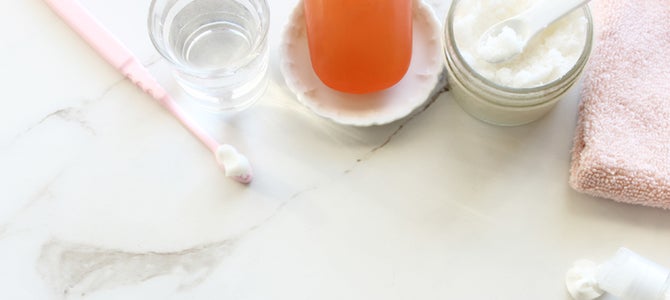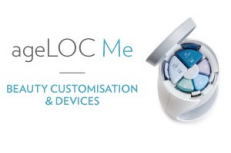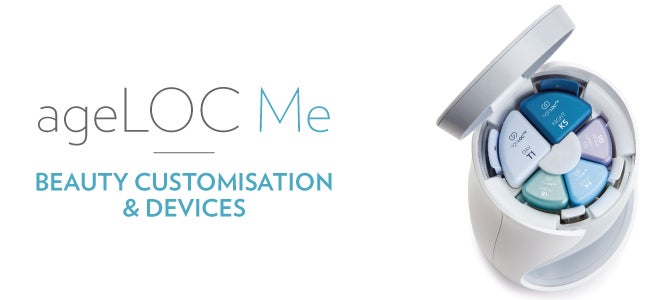What to Do If You Have a Reaction to New Skin Care Products
May 04, 2017

How do I know if my skin is just adjusting to a new product or if there is a problem?
Many have experienced the excitement of getting new skin care products that they can’t wait to use, only to have a week or two pass before the excitement fades and their skin looks worse than it did before. Sometimes testing out a new, unfamiliar product on your skin can result in acne break outs, redness, flaky or dry skin. This phenomenon is not new to the cosmetic industry. Here are a few steps to help you identify whether what you’re experiencing is simply your skin adjusting to something new, or if there is a greater issue.
1. What are the products designed to do?
There are many products out there that are designed to increase cell turnover. These include ingredients like Alpha Hydroxy Acids (ex. Lactic Acid, Glycolic Acid, etc), Retinols, and other chemical exfoliators. Young, healthy skin renews every 28-35 days. But as we age, this renewal process slows down to beyond 50 days, causing the top layers of skin not to shed. This can leave the skin looking dull and sullen. It can also cause clogged pores, which can lead to acne breakouts. When you use a product that contains these chemical exfoliators, or if you use physical exfoliators (ex. scrubs), these ingredients can accelerate this exfoliation process and more quickly bring to the surface any blemish that may have been brewing. This is why it may appear that you are breaking out with more pimples or blemishes than normal. While it may take your skin a few weeks to bounce back from this apparent “break out,” rest assured that this is a normal process. This is also true when using a new acne regimen, so don’t give up if your skin looks a little bit worse for the first few weeks. The acne regimen may simply be doing its job.
2. Are you using the right products for your skin type?
Using the wrong product for your skin type can have negative effects on the overall appearance of your skin. For example, people who already have drier skin and use products that accelerate the exfoliation process may find that their skin is red, flaky and irritated, making their skin even more dry. Those who tend to have oiler skin and use products that include occlusives, like silicones, may find their skin looking oilier. These types of ingredients can form a layer on the skin that traps the natural oils in the pores, which can lead to break outs. This is also true for acne prone skin. For those who have easily irritated skin or who seem to react negatively to product, it is possible they may be using too many active ingredients or too many products at once.
3. Are there ingredients in the products that are not compatible with your skin?
Because everyone’s skin is unique, a product that works well for one may not work for a friend, parent, or sibling. Individuals know their skin better than anyone else, and will begin to identify which products work most effectively for them. They may have discovered this through trial and error, or may have a known allergy. Some choose to use products that don’t include fragrances because they know fragrance (whether natural or synthetic) irritates their skin, eyes or other senses, while others don’t have to worry about fragrance. As mentioned above, skin type may play a key role in some of the ingredients that may not be compatible with your skin.
4. Are you using too many potent ingredients at once?
Many believe that the more products they use, the better and more rapid their results will be. The truth is that using too many products or using higher concentrations of ingredients is not always better. There are some excellent ingredients out there that, if used in high concentrations, can do more harm than good. For example, using more than one chemical exfoliator or using chemical and physical exfoliators at the same time may increase the chances of itching, stinging, burning, and redness; while using just one at the right amount may leave your skin with a healthy-looking glow.
Symptoms, Skin Types, and Resolutions
If you have started to use new products and your skin is not where you want it be, you may be experiencing an increase in blemishes, dry skin, oily skin, etc. So how do you know if what you are experiencing is just a normal adjustment period or if it is something else? Any time you experience a negative reaction to new products, we always recommend to stop using the product and allow your skin enough to heal before re-introducing the product into your skin care regimen.
Break outs or blemishes
Where your blemishes are forming will provide an idea of whether this reaction is normal or abnormal skin behavior. If your skin is just expressing what was already brewing under the surface, then the blemishes would occur where you normally break out or have issues. If they are occurring in areas that you don’t normally experience blemishes, then a single ingredient or combination of ingredients may be irritating your skin.
If the combination of ingredients used are not compatible with your skin, you may need to determine which product or ingredient is causing the issue. It is recommended that you stop using the products to allow your skin time to return to its normal state, and then slowly add them back into your regimen, maybe using them once a day instead of twice. If you are using a new system, adding one product per week may help pinpoint which product may be causing the issue. If it is a specific ingredient, then looking at the ingredient list for the product is the first step. Try to identify any ingredients that you may have used in the past that your skin might not like. This can be tricky because even though your skin might not like an ingredient, this doesn’t mean that it’s a “bad” ingredient. In fact, it may be the concentration or the combination of ingredients that is the skin concern. Using trusted sites like cosmeticsinfo.org or personalcareproductcounsil.org are can provide great insights on the ingredients in the new products you may be trying.
Red, flaky skin
Most of the time if you are experiencing red, flaky skin it is because you have drier skin. This reaction means that if you are using products that help exfoliate the skin, you will likely need to add a heavy moisturizer to your routine. Ceasing to use the product causing the irritation and then adding it back in slowly can give your skin time needed to adjust to its ingredients. If the redness, dry and flaky skin continue, that product may not be compatible with your skin. Once again, you may have to look at ingredient listings to make sure that there are no ingredients in the product that are not compatible with your skin. This advice holds true for individuals who have oilier skin and are experiencing dry, flaking, and red irritated skin.
Greasy, shiny, oily skin
Those who have oilier skin tend to enjoy product systems that have lotions compared to creams. If you are using a new system of products and notice that your skin seems oilier, you may want to change what moisturizers you are using. Additionally, check what type of ingredients are used in the product. You may be using products that contain higher amounts of occlusives, which help keep the oil you naturally produce on the skin.
Normal skin
If you are experiencing a reaction to new product use and you have normal skin, you may need to adjust how you are using the products. For example, use heavier creams or more moisturizers on areas of the skin that are dry and do the opposite on areas, like the t-zone, that tend to be oilier. Again, once you have made these changes, slowly add the products back in to give your skin time to adjust to new products/ingredients.

Written by:
Molly Nielsen
Technical Communications and Education Manager
Nu Skin



